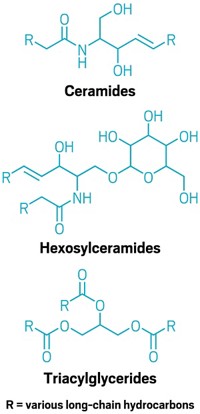Advertisement
Grab your lab coat. Let's get started
Welcome!
Welcome!
Create an account below to get 6 C&EN articles per month, receive newsletters and more - all free.
It seems this is your first time logging in online. Please enter the following information to continue.
As an ACS member you automatically get access to this site. All we need is few more details to create your reading experience.
Not you? Sign in with a different account.
Not you? Sign in with a different account.
ERROR 1
ERROR 1
ERROR 2
ERROR 2
ERROR 2
ERROR 2
ERROR 2
Password and Confirm password must match.
If you have an ACS member number, please enter it here so we can link this account to your membership. (optional)
ERROR 2
ACS values your privacy. By submitting your information, you are gaining access to C&EN and subscribing to our weekly newsletter. We use the information you provide to make your reading experience better, and we will never sell your data to third party members.
Biochemistry
Certain terpene genes track cannabis varieties
Chemical and genetic profiling provides new foundation for classifying cannabis
by Emily Harwitz
November 2, 2021

Despite cannabis’s growing use in the US and the variety of cannabis products available, there is no objective standard for classifying those products. The indica and sativa labels, the most common distinction, are supposedly rooted in two different plant types. But these labels are widely debated, and a growing body of evidence shows that the names on cannabis products are misleading and inconsistent between growers, an especially concerning problem for medical use, say cannabis industry experts. A new study used chemical and genetic analysis to show that, while products labeled indica or sativa are genetically indistinct, markers in genes that control the expression of key psychoactive and aroma compounds vary significantly across products and could be used to classify cannabis (Nat. Plants 2021, DOI: 10.1038/s41477-021-01003-y).

Terpenes and cannabinoids are key classes of compounds present in cannabis and are responsible for both aromas and psychoactive effects. A previous study used gas chromatography–mass spectrometry to quantify levels of 40 terpenes and cannabinoids in almost 300 cannabis samples from a distributor in the Netherlands (Cannabis Cannabinoid Res. 2016, DOI: 10.1089/can.2016.0017). Building on that, a team of researchers, led by agricultural geneticist Sean Myles at Dalhousie University, extracted high quality DNA from 137 of the samples. The team identified 116,296 sites of genetic variation, or single nucleotide polymorphisms, within the genomes, performed statistical analysis to look for links between the terpene profiles and the genetic differences, and evaluated how accurately those data matched up with a five-point labeling scale, ranging from 100% indica to 100% sativa, that was provided by the samples’ distributor.
The researchers found indica- and sativa-labeled samples to be genetically indistinguishable overall. However, indica labels were correlated with elevated levels of the terpenoids myrcene, guaiol, γ-eudesmol, and β-eudesmol. Myrcene is thought to be largely responsible for indica’s earthy aroma and sedative effects. Sativa labels were positively correlated with increased levels of the terpenoids bergamotene and farnesene, which impart fruity, tea-like aromas. It is routinely happening in the cannabis industry that strain names are not reliable indicators of plants’ genetic identity, Myles says, and in some cases this means higher prices are being charged for lower-grade products.
The team identified the genes that control the expression of those terpenoids, and genetic markers within those genes, which could enable the highly selective breeding of cannabis that’s already in use in other agricultural crops.
This study is “advancing the foundation for the conversation” about classification and chemotyping, says Jeffrey Raber, CEO of cannabis R&D lab The Werc Shop, that will allow him and other retailers to label cannabis in ways that are consistent and useful to consumers.
“In the future, having genetic information and better molecular profiles is really the only way we’re going to be able to categorize the strains scientifically,” says Amber Wise, scientific director at the cannabis testing lab Medicine Creek Analytics, who was not involved with the study.
“We’re going to have to decide, as a scientific community and as a cannabis industry, what are the important molecules that we want to see reported,” Wise says, and this study is “definitely a step in the right direction and a way for other people to analyze data in a similar way.”





Join the conversation
Contact the reporter
Submit a Letter to the Editor for publication
Engage with us on Twitter